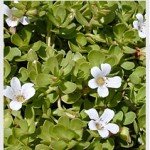Brahmi: memory enhancer

Exploring memory enhancers: Brahmi reverses memory deficit
Herbal medicines have been used since time immemorial to maintain health and to treat diseases. The WHO estimates that about three-quarters of the world’s population currently use herbs and other forms of traditional medicines to treat diseases. Our society’s growing interest in herbal products and other dietary supplements is now being believed to stem from our disappointment in allopathic medicine. Because herbal products are thought to be natural, many people believe that they are safe. Even though there is anecdotal evidence supporting the use of herbal medicines, scientific studies in this field are in infancy.
Brahmi is one such drug that has been cited in ancient Indian medical literature as a prominent herb useful for memory related problems, however, the modern literature about this drug has been lacking in its mechanism of action, making it difficult for the world to accept its value until any preclinical (animal testing) or clinical (human) testing is carried out. The research teams at CDRI (Central Drug Research Institute) Lucknow had initiated some work in this field which could not be followed in detail. We then took the lead by meticulous investigations using mouse models of memory. We have shown that when Brahmi (botanical name B. monniera) is given to amnesic mice in which memory loss has been induced, there is significant improvement in learning and memory. We used a series of drugs that act at putative molecular targets in brain, so that such areas in brain which are responsible for memory acquisition, are selectively altered. We then verified the resulting memory deficit caused due to such drugs by recording the time taken by the animal to memorise and then tried to rescue the animals from this memory loss using a combination of Brahmi and amnesic drug, one at a time, followed by recording of memorizing time, which went down each time Brahmi was used in different combinations. The amnesic agents are carefully chosen because these are known to interfere the known chemical steps of memory acquisition and provide an opportunity to map the mechanism of action of Brahmi, assuming that its action will likely antagonise the molecular step inhibited by the respective amnesic agents. We used Diazepam, scopolamine.
LNNA and MK 801 as amnesic agents. These set of experiments led to weaving of a step by step mechanism of action, unmasking the Brahmi’s mechanism of action. The study provides a molecular link to the traditionally held view that Brahmi rejuvenates memory. The study was not only able to validate the various steps previously reported to be involved in memory formation but it also led to uncovering of information about receptors B. Monniera uses while enhancing memory. These experimental studies were peer reviewed and subsequently published in Psychopharmacology, Neuroscience and Behavioral Brain Research. This work seeks to dilute the popular reductionist (molecular biology) paradigm central to most of the current scientific approaches in the world which invest in single molecules rather than whole extracts like Brahmi. This provocative observation has potential implications for validating future therapies for memory disorders such as Alzheimer’s Disease. Brahmi’s neuroprotective effect in a mouse model of stroke was also tested in which one of the artery supplying blood to brain is closed so that part of the blood reaching the brain is stopped in areas responsible for memory storage resulting in neuronal damage. We found out that the drug was able to reverse the damage caused by shortage of blood supply. The clinical trials to test the efficacy of Brahmi are now being planned and additional investigations including estimation of Bacosides content in mouse brains is being planned.
Lineage negative stem cells role in memory loss rescue
Umbilical cord blood is underutilized and a good source of stem cells. We have exploited this source to achieve therapeutic effects by using lineage negative stem cells in rescue of memory loss induced by amyloid β. 50,000 dose of Lineage negative stem cells when transplanted in hippocampus region of mice brain showed reversal of memory. These cells showed rescue of function chiefly mediated by its paracrine effects, elevated the BDNF expression which in turn activates CREB and enhances its expression. The elevation of both these molecules BDNF and CREB is responsible for expression of memory related genes. Further, we are looking more closely into molecular mechanisms behind such effects. We are also focusing specifically on the BDNF-trkB pathway by utilising the BDNF inhibitor to substantiate their role in stem cell mediated rescue.

